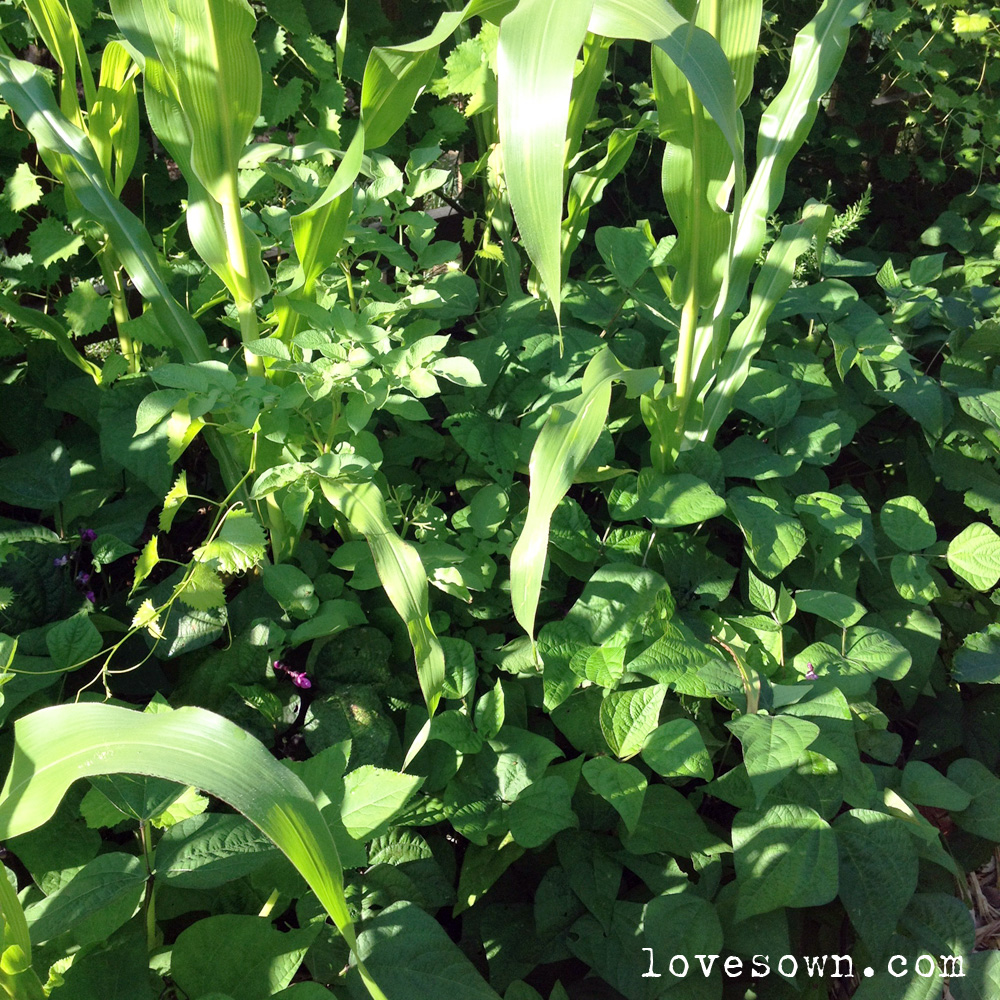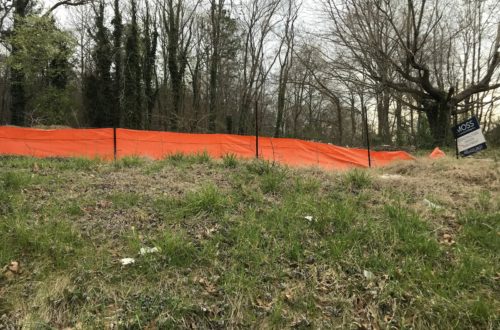The importance of interplanting and biodiversity in the vegetable garden
Companion planting, or interplanting is the practice of growing crops together so that one or both may be benefited by the presence of the other or planting crops together that at the very least won’t commit unspeakable crimes on each other. Conventional home garden methods are to plant crops in orderly blocks or rows, which makes navigation and harvesting much simpler. Here’s the problem, when you don’t interplant, your rows are essentially a buffet for whatever pest or disease takes a liking to that specific crop. When we planted a garden at a nearby school using conventional methods, squash bugs absolutely ravaged the patch of squash and zucchini. When I planted tomatoes closely in a raised bed years ago, they all caught the same diseases because the leaves of the plants were rubbing up against each other.
If you walk into a forest, rarely will you see a monoculture of plants. Instead, there is a diversity of trees, shrubs, and even grasses in the sunny patches. This is nature’s way of healing itself and preventing disease. In the home garden, the more diversity we add and the more we interplant various species, we create a line of defense against pests, diseases and even weeds. Another benefit is that mature plants can provide protection to younger ones and shade to cool down those crops that can’t tolerate high heat. I’ve got a patch of arugula seedlings just hanging out under the Queen Anne peas that I suspect will take off once the peas are harvested and plants are composted. That ground will never totally be bare, which also prevents opportunist weeds from moving in.
 This summer, I’ve had far less weed problems as I’ve mixed corn, beans, and potatoes. The early planted potatoes sheltered the young bean seedlings from the bugs that have historically shredded their tender leaves. Last year, every soy bean plant that sprouted was soon eaten. This year,
This summer, I’ve had far less weed problems as I’ve mixed corn, beans, and potatoes. The early planted potatoes sheltered the young bean seedlings from the bugs that have historically shredded their tender leaves. Last year, every soy bean plant that sprouted was soon eaten. This year,
I doubt I’ve lost a single plant and the harvest is coming in
abundantly. The corn with its shallow roots and narrow foliage made use of the top layer of soil and filled in the gaps between plants without hogging too much sunlight. The beans, once they are done with production will return some of the nitrogen they have fixed from the air into the soil. I have even managed to tuck in a few squash plants to this mix.
The largest pest problem we’ve dealt with over the years is squash vine borers. This year I’ve planted at least seven varieties of squash and zucchini. We have lost the birdhouse gourd vines already, but several of the other varieties including the Trombetta squash are thriving. By spreading the squash out all over the garden and planting over the course of several weeks, we’ve helped slow down the egg laying of the vine borer moths. Squash bugs tend to have two peak breeding times in our region, one of which is mid June. Planting new seeds just before then can gets a new crop started in preparation for any damage they do. This year, thanks to heavy use of duct tape on the eggs and bugs last season, the numbers have dwindled.
So here’s the rundown in bulleted format for those of you who love lists. Interplanting with a diverse selection of plants, at the same time and in succession:
- Increases the number of plants you may grow per square foot if you pay attention to root depth and leaf spread.
- Can slow down the spread of disease as there is a natural barrier between carriers of the same disease.
- Can slow down the damage from pests as there are other plants to act as a distraction or deterrent from them finding their desired food.
- Enables a longer growing season for cool weather crops when interplanted in the shade of taller plants.
- Reduces the amount of time spent weeding as more of the ground is covered by crops.
- Reduces the risk of complete and utter failure in your attempt to grow your own food.
I highly recommend the book Gaia’s Garden by Toby Hemenway. His first chapter on ecological gardening has some beautiful examples of how people have used ecological principles to restore habitats while producing a bountiful supply of food.


2 Comments
Ruth
I have been trying to do exactly that, I have one bed that is better than the rest, but still not as divers as yours. I know that crop rotation is also important, which is why I planted my tomato's in the same bed (along with a bunch of other stuff) and the squash and cucumbers in another. If you completely mix things up, how do you work in the crop rotation?
paige.puckett
I watched a documentary where the grower used 4" of wood chips and never needed to rotate because disease wasn't a factor. In nature, seeds are dropped back down where the parent plant was and some are carried by the wind and critters. My plan is to not worry about crop rotation other than the potato patch and the tomato patch. While I've interplanted most things and have tomatoes popping up all along the fence, I still have blocks of potatoes and tomatoes, so I'll just rotate those blocks to areas that didn't have either crop since the two share diseases. Hopefully as I build up healthy soil, I won't have to deal with diseases. Wishful thinking?